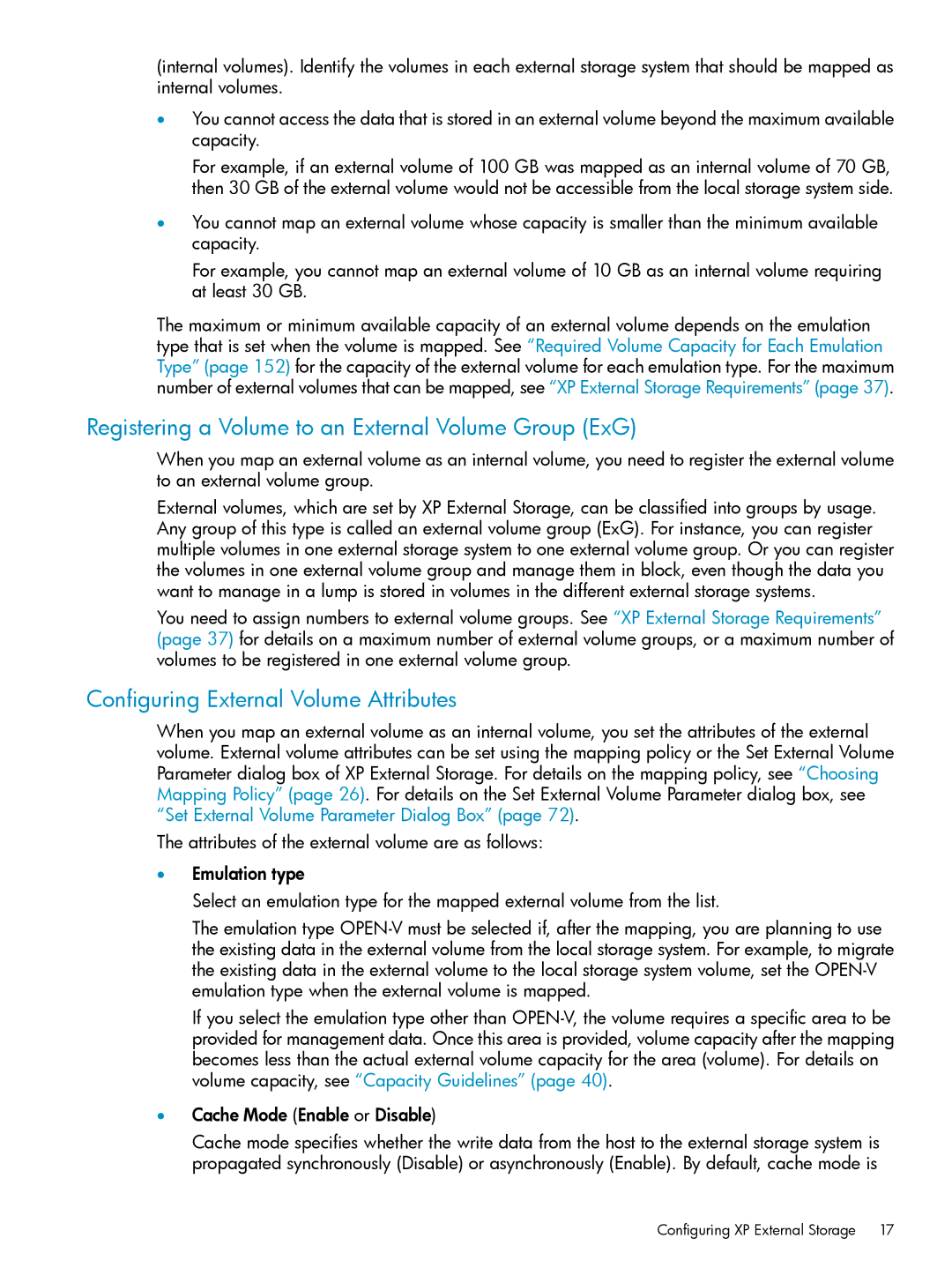(internal volumes). Identify the volumes in each external storage system that should be mapped as internal volumes.
•You cannot access the data that is stored in an external volume beyond the maximum available capacity.
For example, if an external volume of 100 GB was mapped as an internal volume of 70 GB, then 30 GB of the external volume would not be accessible from the local storage system side.
•You cannot map an external volume whose capacity is smaller than the minimum available capacity.
For example, you cannot map an external volume of 10 GB as an internal volume requiring at least 30 GB.
The maximum or minimum available capacity of an external volume depends on the emulation type that is set when the volume is mapped. See “Required Volume Capacity for Each Emulation Type” (page 152) for the capacity of the external volume for each emulation type. For the maximum number of external volumes that can be mapped, see “XP External Storage Requirements” (page 37).
Registering a Volume to an External Volume Group (ExG)
When you map an external volume as an internal volume, you need to register the external volume to an external volume group.
External volumes, which are set by XP External Storage, can be classified into groups by usage. Any group of this type is called an external volume group (ExG). For instance, you can register multiple volumes in one external storage system to one external volume group. Or you can register the volumes in one external volume group and manage them in block, even though the data you want to manage in a lump is stored in volumes in the different external storage systems.
You need to assign numbers to external volume groups. See “XP External Storage Requirements” (page 37) for details on a maximum number of external volume groups, or a maximum number of volumes to be registered in one external volume group.
Configuring External Volume Attributes
When you map an external volume as an internal volume, you set the attributes of the external volume. External volume attributes can be set using the mapping policy or the Set External Volume Parameter dialog box of XP External Storage. For details on the mapping policy, see “Choosing Mapping Policy” (page 26). For details on the Set External Volume Parameter dialog box, see “Set External Volume Parameter Dialog Box” (page 72).
The attributes of the external volume are as follows:
•Emulation type
Select an emulation type for the mapped external volume from the list.
The emulation type
If you select the emulation type other than
•Cache Mode (Enable or Disable)
Cache mode specifies whether the write data from the host to the external storage system is propagated synchronously (Disable) or asynchronously (Enable). By default, cache mode is
